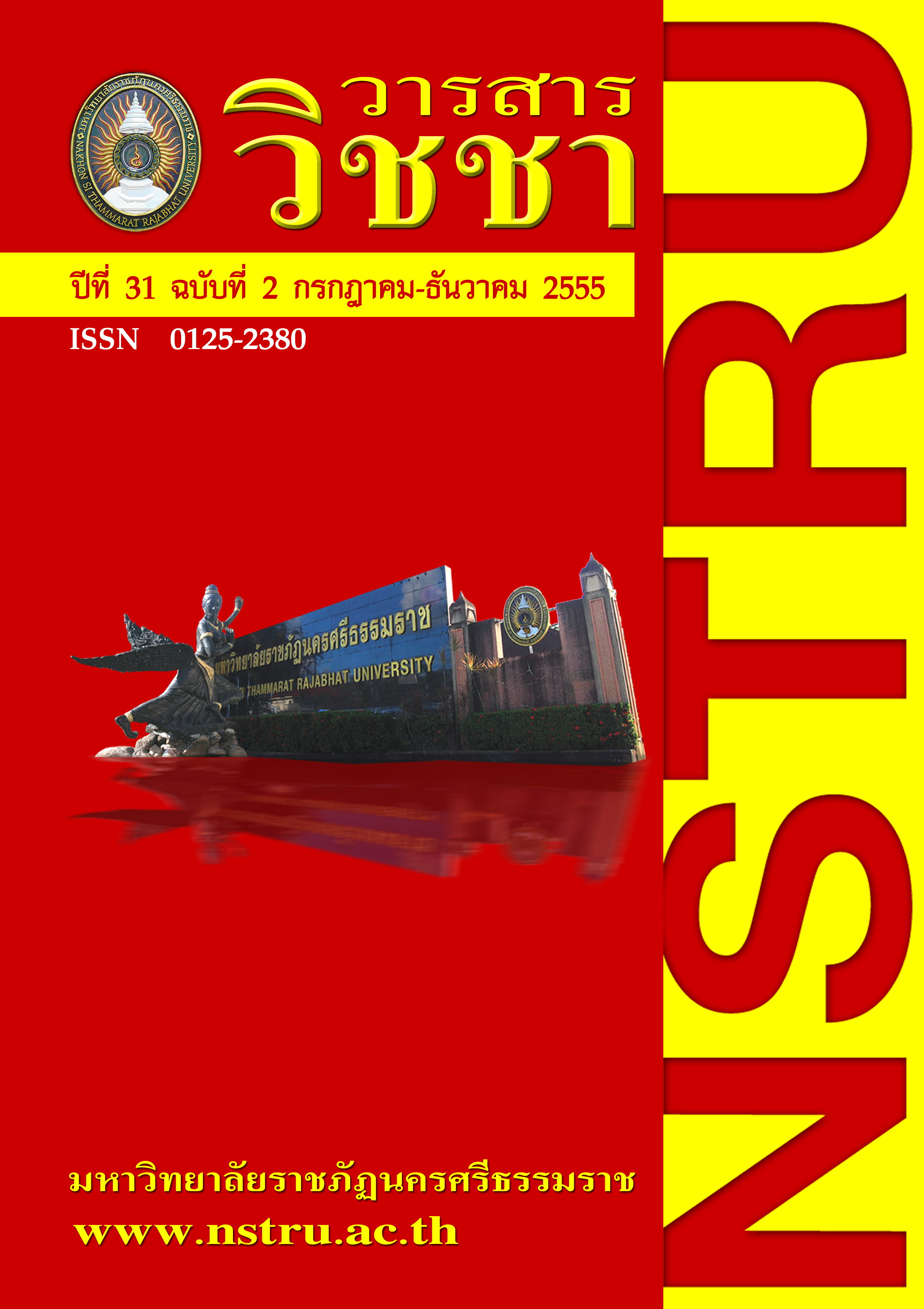คุณภาพทางจุลชีววิทยาของน้ำดื่มในมหาวิทยาลัยราชภัฏนครศรีธรรมราช
Main Article Content
Abstract
Microbiological quality of Drinking Water at Nakhon Si ThammaratRajabhatUniversity
This research aims to study the microbiological quality of drinking water in Nakhon Si ThammaratRajabhat University (NSTRU). Random sampling of drinking water was taken from 12 buildings, at three locations per building. These were buildings 4, 6, 9, 10, 11, 12, 13, 16, the student cafeteria, the Centre for Academic Services, the Centre for Health Promotion, and the Office of Science and Technology building. Samples were collected once per month, for six months (January - June 2011). In total 216 samples were analyzed for living microbial contamination. The microbial contamination values obtained were compared with the drinking water standards of the Thai Industrial Standards Institute, and found that 154 samples (71 percent) did not meet the standard. 62 samples (29 percent) did pass the criteria of the value of between2.00-112.60x102 colonies per milliliter. The drinking water samples with the most contaminants were collected from buildings 10, 12, 16, and the cafeteria. Samples with the least contamination came from the water cooling unit at the Centre for Academic Services.
The results of this analysis suggest that those who consume drinking water from any of the drinking units from which samples were taken in the buildings of NSTRU are doing so at high risk to themselves. The water contains microorganisms which do not meet stated standards, and this indicates that clean drinking water is not being provided.
Article Details
เนื้อหาและข้อมูลในบทความที่ลงตีพิมพ์ในวารสารวิชชา มหาวิทยาลัยราชภัฏนครศรีธรรมราช ถือเป็นข้อคิดเห็นและความรับผิดชอบของผู้เขียนบทความโดยตรง ซึ่งกองบรรณาธิการวารสารไม่จำเป็นต้องเห็นด้วยหรือร่วมรับผิดชอบใด ๆ
บทความ ข้อมูล เนื้อหา รูปภาพ ฯลฯ ที่ได้รับการตีพิมพ์ในวารสารวิชชา มหาวิทยาลัยราชภัฏนครศรีธรรมราช ถือเป็นลิขสิทธ์ของวารสารวิชชา มหาวิทยาลัยราชภัฏนครศรีธรรมราช หากบุคคลหรือหน่วยงานใดต้องการนำข้อมูลทั้งหมดหรือส่วนหนึ่งส่วนใดไปเผยแพร่ต่อหรือเพื่อการกระทำการใด ๆ จะต้องได้รับอนุญาตเป็นลายลักษณ์อักษรจากวารสารวิชชา มหาวิทยาลัยราชภัฏนครศรีธรรมราชก่อนเท่านั้น
The content and information in the article published in Wichcha journal Nakhon Si Thammarat Rajabhat University, It is the opinion and responsibility of the author of the article. The editorial journals do not need to agree. Or share any responsibility.


